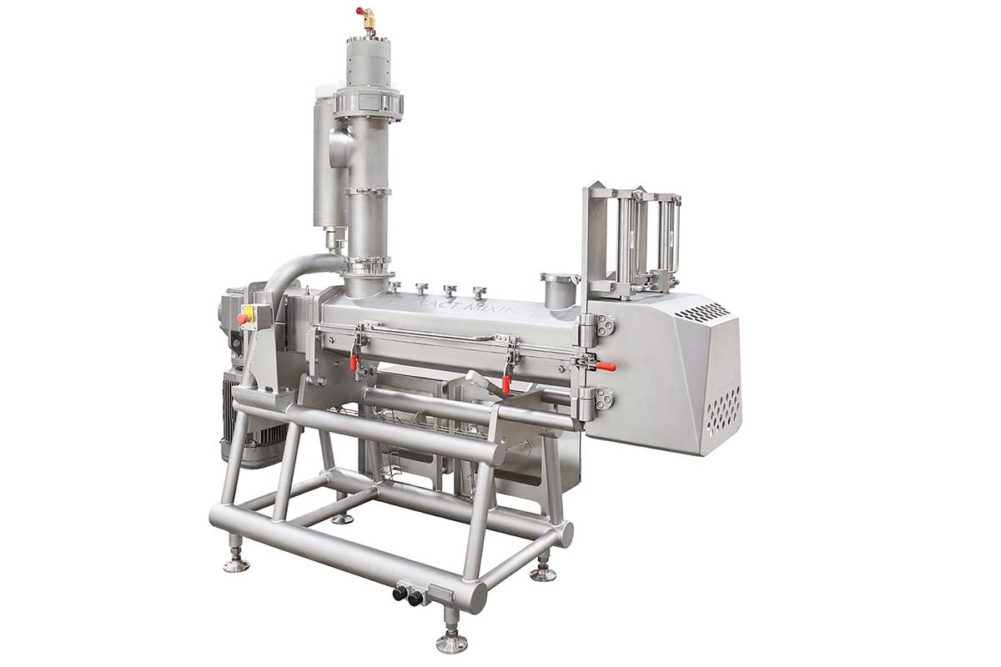Bakers are thinking outside the bowl to find solutions for the workplace gap. That’s because there is no greater need for skilled labor than at the mixing stage. Just one slight error or lack of judgment can result in a rash of ramifications throughout the rest of the production line. It’s why bakery operators typically put their most experienced personnel at the front of the process.
“When the turnover is high, it usually comes with a loss of knowledge and skills and increases the risk of mistakes,” noted Melanie Gay, marketing manager for products and services, VMI. “The training of new staff members becomes critical to ensure the quality and consistency of production, but lack of time and good training tools can make it difficult. Equipment manufacturers can help by rethinking their training materials to help train new staff independently and efficiently.”
Jim Warren, vice president, Exact Mixing, Reading Bakery Systems (RBS), pointed out that solving the skilled labor question is complicated. Baking and snack companies now find it difficult to fill vacant positions, while employees often leave shortly after training.
“Bakers are turning to automation not only to produce product but also to ensure quality,” he explained. “More often, control loops are being incorporated into the process to automatically control everything from dough temperature to recipes to dough mixing. The main reason is that the day of a master baker with 25 years of experience is past. If you have one experienced person in your plant operation, you are fortunate.”
Even those lucky bakeries with few workplace issues are seeking to simplify the mixing process.
“These bakeries are looking for labor savings, and they’re trying to manage their labor situation by eliminating a position or moving that person to another skilled job that’s harder to fill by making the mixing process easier,” said Andrew McGhie, director of sales, Shaffer.
To automate the labor-intensive part of the mixing process, the low-hanging fruit involves streamlining sanitation to ensure food safety or reducing raw dough handling to minimize ergonomic issues.
“Nowadays, all lines are standard equipped with at least easy-clean and clean-in-place (CIP),” said Ruud van Mer, mixing specialist, Bühler Group. “Cleaning in place means cleaning in line so nothing is cleaned by hand anymore. Bakeries are now standard equipped with complete CIP installations.”
Ms. Gay said a mobile CIP station can be connected to the liquid dosing stations of the company’s Verymix continuous mixer.
“The main asset of CIP stations, apart from their flexibility and mobility, is that they reduce production downtimes by optimizing cleaning time when changing products,” she said.
Ronald Falkenberg, regional sales director USA & Canada, Diosna, pointed out its latest Wendel mixer comes with hygienically designed surfaces to avoid microbial and particulate contamination and rounded profiles and electronic drives that allow for a complete washdown.
The open-frame mixer also features a bottom discharge from the bowl that dumps dough onto conveyors to feed the hopper.
During the past five years, Mr. McGhie said, Shaffer has accelerated its automatic dough handling with chunkers or dough pumps that shuttle between two mixers and enhanced chunking systems that directly convey dough to the production line’s forming or divider hopper. The company has also introduced extreme over-tilt.
“The bowl is now tilting 160 degrees up to 180 degrees so that gravity does all of the work,” he said. “You don’t need anybody there pulling or cutting the dough out. With extreme over-tilt and an automatic jogging function, the dough comes out of the bowl and moves to the next stage to the dough pump, chunker or trough. The operator doesn’t have to be there, which reduces workload, and it comes with fencing and guarding that provides a higher level of safety.”
Many bakeries rely on recipe management systems that offer front-end controls to alleviate the skilled baker shortage.
“Less experienced operators allow bakeries to use more simplified controls that can be easily programmed,” said Jerry Murphy, vice president of sales, Gemini Bakery Equipment/KB Systems. “Integration of ingredient handling in the overall ‘recipe control’ system makes it even more essential today.”
Ms. Gay noted that digital automation ensures quality control and repeatability of mixing processes for industrial bakeries.
“Continuous and automated mixing systems are now equipped with a powerful HMI, which can manage recipe formulation, dosing, programming, monitoring of instructions and traceability,” she said.
To bolster quality control, Shaffer offers sensors that constantly monitor dough temperature instead of inserting a probe into the batch near the end of the mix cycle.
“As the dough is discharging, the infrared sensors are automatically measuring the dough temperature a hundred times in a half second to get a good representation of what the dough temperature is, which is critical to processing,” Mr. McGhie said. “It also measures dough temperature while it’s mixing. If you mix with consistent temperature, you get consistent quality as well.”
This article is an excerpt from the June 2022 issue of Baking & Snack. To read the entire feature on Mixing, click here.





